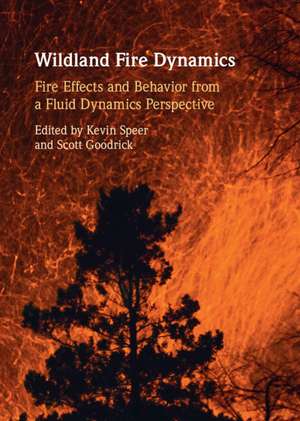Wildland Fire Dynamics
Editat de Kevin Speer, Scott Goodricken Limba Engleză Hardback – 29 iun 2022
Preț: 702.25 lei
Preț vechi: 816.57 lei
-14% Nou
Puncte Express: 1053
Preț estimativ în valută:
134.37€ • 146.42$ • 113.23£
134.37€ • 146.42$ • 113.23£
Carte tipărită la comandă
Livrare economică 23 aprilie-07 mai
Preluare comenzi: 021 569.72.76
Specificații
ISBN-13: 9781108498555
ISBN-10: 1108498558
Pagini: 350
Dimensiuni: 175 x 250 x 20 mm
Greutate: 0.64 kg
Editura: Cambridge University Press
Colecția Cambridge University Press
Locul publicării:Cambridge, United Kingdom
ISBN-10: 1108498558
Pagini: 350
Dimensiuni: 175 x 250 x 20 mm
Greutate: 0.64 kg
Editura: Cambridge University Press
Colecția Cambridge University Press
Locul publicării:Cambridge, United Kingdom
Cuprins
1. Wildland fire combustion dynamics: the intersection of combustion chemistry and fluid dynamics Andrew L. Sullivan; 1.1 Introduction; 1.2 Combustion chemistry; 1.3 Combustion processes and environmental interactions; 1.4 Physical evidence of environmental interactions with combustion processes; 1.5 Concluding remarks; References; 2. The structure of line fires at flame scale Salman Verma, Mohamed Ahmed and Arnaud Trouvé; 2.1 Introduction; 2.2 The dynamics of line fires; 2.3 Integral model; 2.4 Large Eddy simulations; 2.5 Conclusion; References; 3. Energy transport and measurements in wildland and prescribed fires Bret W. Butler and Joseph J. O'Brien; 3.1 Introduction; 3.2 Heat transfer; 3.3 Heating rates in flames; 3.4 Fire models; 3.5 Ignition; 3.6 Flames; 3.7 Impacts of heat and mass transfer on flames; 3.8 Conclusion; References; 4. Fire line geometry and pyroconvective dynamics Jason J. Sharples, James E. Hilton, Rachel L. Badlan, Christopher M. Thomas and Richard H. D. McRae; 4.1 Introduction; 4.2 Pyroconvective effects on fire propagation; 4.3 Extreme wildfire development; 4.4 Modeling pyroconvective interactions; 4.5 Discussion and conclusions; References; 5. Firebrands Ali Tohidi and Nigel Berkeley Kaye; 5.1 Introduction; 5.2 Firebrand generation; 5.3 Transport modeling; 5.4 Ignition of spot fires; References; 6. Re-envisioning fire and vegetation feedbacks Eric Rowell, Susan Prichard, J. Morgan Varner and Timothy M. Shearman; 6.1 Introduction; 6.2 Fuels re-envisioned: the ecology of fuels and fire environments; 6.3 Two-way feedbacks between fire and vegetation; 6.4 Unified model of plant and fire feedbacks; 6.5 Future directions and applications; References; 7. Wind and canopies François Pimont, Jean-Luc Dupuy and Rodman Linn; 7.1 Introduction; 7.2 Wind flows in the lower part of the atmosphere; 7.3 Wind flows in homogeneous canopies; 7.4 Heterogeneous canopies; 7.5 Modeling the interaction between wind flow and plant canopies; 7.6 Measuring wind in fire experiments; 7.7 Conclusion; References; 8. Coupled fire-atmosphere model evaluation and challenges Janice Coen, Miguel Cruz, Daniel Rosales-Giron and Kevin Speer; 8.1 Introduction; 8.2 Fire front spread rate expectations and uncertainties from models and data; 8.3 Fuel considerations in models and validation; 8.4 Hindcasting case studies and challenges; 8.5 Discussion and conclusion; References; Index; Colour plates section to be found between pp. 128 and 129.
Descriere
An overview of recent advances in the quantitative modeling of wildland fire based on fluid dynamics.
